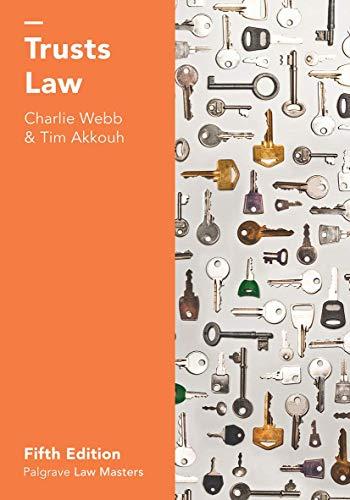Question
Driver was driving an automobile that struck Pedestrian in the crosswalk of a busy street. Pedestrian suffered painful fractures and a concussion that affected her
Driver was driving an automobile that struck Pedestrian in the crosswalk of a busy street. Pedestrian suffered painful fractures and a concussion that affected her memory of the accident. Pedestrian filed a negligence action against Driver, who responded with a general denial and an assertion that Pedestrian's negligence caused her injuries. The parties have stipulated to the severity of Pedestrian's injuries, to Pedestrian's pain and suffering, and to the total value of Pedestrian's damages. The parties are scheduled for a jury trial on the issues of both Driver's and Pedestrian's negligence. Pedestrian plans to call Witness to testify at trial. Witness did not see the collision occur. However, Witness will testify that he walked past Pedestrian no more than five seconds before the collision, at which time Witness saw that Pedestrian was deeply engrossed in a cell phone conversation. Witness will also testify that he saw Driver's distinctive sports car as it approached the intersection in which Pedestrian was hit. Witness, who has no specialized training, experience, or education, will also offer the opinion that the car was speeding just prior to the collision because it was traveling noticeably faster than the cars near it, all of which appeared to be traveling at the same slower speed. Pedestrian plans to call her Spouse to testify that Pedestrian is very cautious and risk averse.
Pedestrian also plans to testify at trial. She will not deny having been on the cell phone when Witness walked by, but will claim to have lowered the cell phone and looked for traffic just prior to entering the intersection. In fact, Pedestrian intends to testify that she has used a cell phone for many years, that she talks on it while walking almost every day, and that she invariably ends a call or lowers the cell phone when preparing to cross a street in order to look both ways before entering the intersection. Driver intends to undermine Pedestrian's credibility by introducing evidence of her memory loss. Pedestrian counters that if the jury hears about some of Pedestrian's injuries, then it must hear about all of them, and so Pedestrian seeks to introduce evidence on the full nature and extent of her other injuries. At the final pretrial motion hearing, Driver's counsel argued that the court should grant this motion in limine:
(1) to exclude evidence of Pedestrian's cell phone use at any time other than the day of the collision,
The evidence rules of this jurisdiction are identical to the Federal Rules of Evidence. How should the court rule on this motion? Explain.
Step by Step Solution
There are 3 Steps involved in it
Step: 1

Get Instant Access to Expert-Tailored Solutions
See step-by-step solutions with expert insights and AI powered tools for academic success
Step: 2

Step: 3

Ace Your Homework with AI
Get the answers you need in no time with our AI-driven, step-by-step assistance
Get Started


